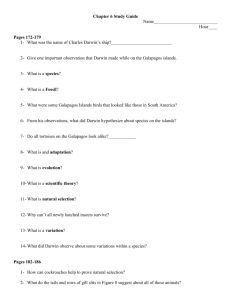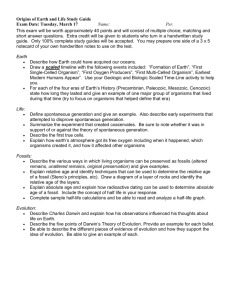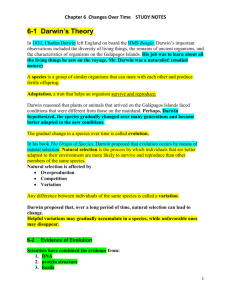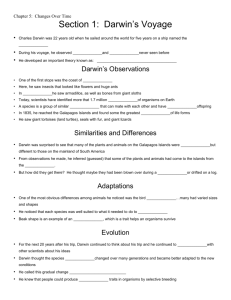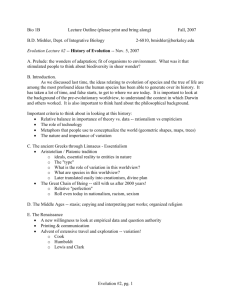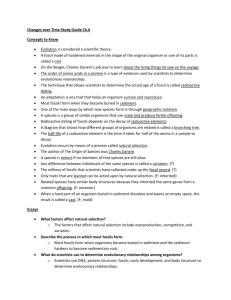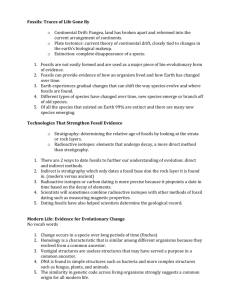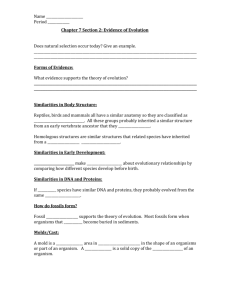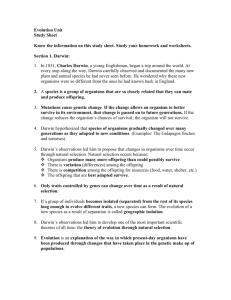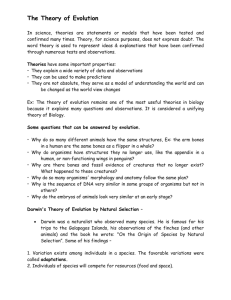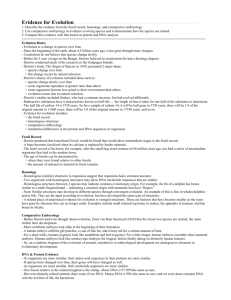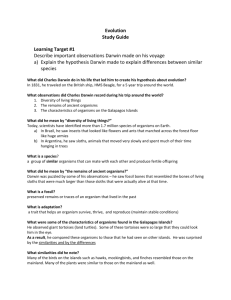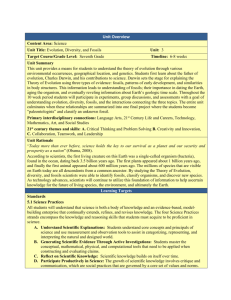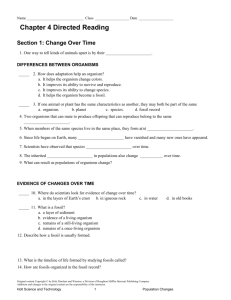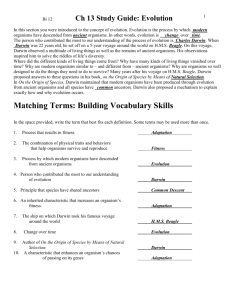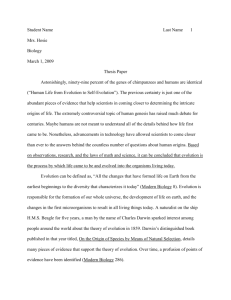Science Chapter 7 “Changes over Time”
advertisement
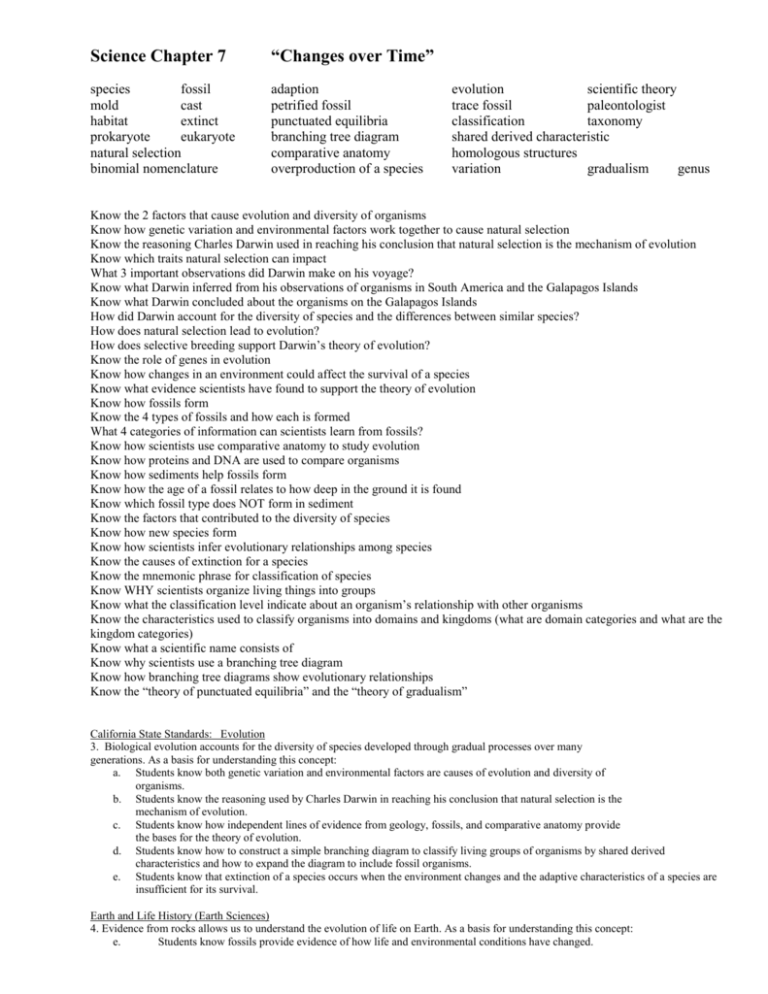
Science Chapter 7 “Changes over Time” species fossil mold cast habitat extinct prokaryote eukaryote natural selection binomial nomenclature adaption petrified fossil punctuated equilibria branching tree diagram comparative anatomy overproduction of a species evolution scientific theory trace fossil paleontologist classification taxonomy shared derived characteristic homologous structures variation gradualism genus Know the 2 factors that cause evolution and diversity of organisms Know how genetic variation and environmental factors work together to cause natural selection Know the reasoning Charles Darwin used in reaching his conclusion that natural selection is the mechanism of evolution Know which traits natural selection can impact What 3 important observations did Darwin make on his voyage? Know what Darwin inferred from his observations of organisms in South America and the Galapagos Islands Know what Darwin concluded about the organisms on the Galapagos Islands How did Darwin account for the diversity of species and the differences between similar species? How does natural selection lead to evolution? How does selective breeding support Darwin’s theory of evolution? Know the role of genes in evolution Know how changes in an environment could affect the survival of a species Know what evidence scientists have found to support the theory of evolution Know how fossils form Know the 4 types of fossils and how each is formed What 4 categories of information can scientists learn from fossils? Know how scientists use comparative anatomy to study evolution Know how proteins and DNA are used to compare organisms Know how sediments help fossils form Know how the age of a fossil relates to how deep in the ground it is found Know which fossil type does NOT form in sediment Know the factors that contributed to the diversity of species Know how new species form Know how scientists infer evolutionary relationships among species Know the causes of extinction for a species Know the mnemonic phrase for classification of species Know WHY scientists organize living things into groups Know what the classification level indicate about an organism’s relationship with other organisms Know the characteristics used to classify organisms into domains and kingdoms (what are domain categories and what are the kingdom categories) Know what a scientific name consists of Know why scientists use a branching tree diagram Know how branching tree diagrams show evolutionary relationships Know the “theory of punctuated equilibria” and the “theory of gradualism” California State Standards: Evolution 3. Biological evolution accounts for the diversity of species developed through gradual processes over many generations. As a basis for understanding this concept: a. Students know both genetic variation and environmental factors are causes of evolution and diversity of organisms. b. Students know the reasoning used by Charles Darwin in reaching his conclusion that natural selection is the mechanism of evolution. c. Students know how independent lines of evidence from geology, fossils, and comparative anatomy provide the bases for the theory of evolution. d. Students know how to construct a simple branching diagram to classify living groups of organisms by shared derived characteristics and how to expand the diagram to include fossil organisms. e. Students know that extinction of a species occurs when the environment changes and the adaptive characteristics of a species are insufficient for its survival. Earth and Life History (Earth Sciences) 4. Evidence from rocks allows us to understand the evolution of life on Earth. As a basis for understanding this concept: e. Students know fossils provide evidence of how life and environmental conditions have changed.
